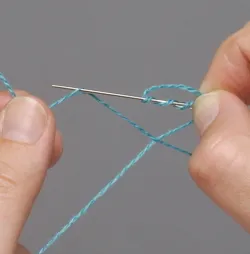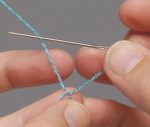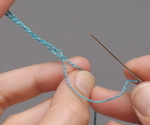Main image: Riviera diamond lace shawl by Anniken Alice, from The Knitter issue 82.
If yarn needs to be joined, either because the ball ran out, the yarn broke or there was a knot, whatever the reason it is not always appropriate or desirable to join yarn at the end of a row.

This is especially so if the garment is a scarf with the row end being a selvedge.
There are many ways of joining within a row, such as unwinding and then twisting the yarns together, and splicing (shown above and below).

In this final entry in our lace knitting masterclass series we will look at how to do a Russian join.



